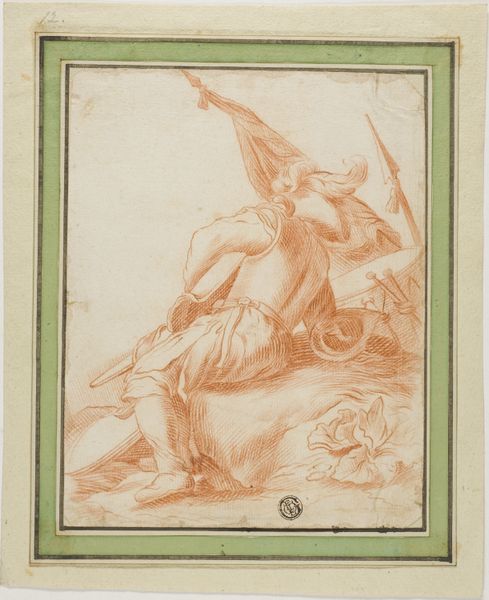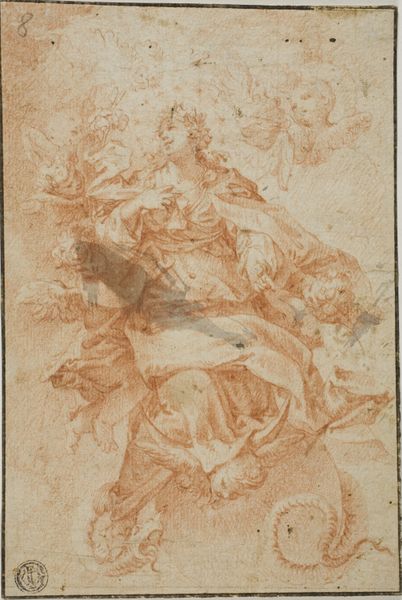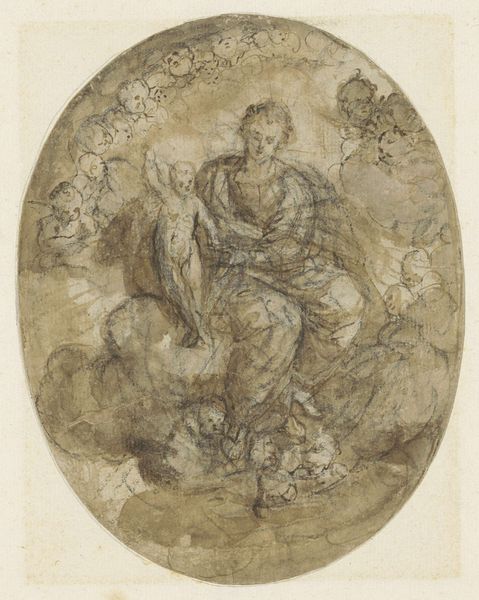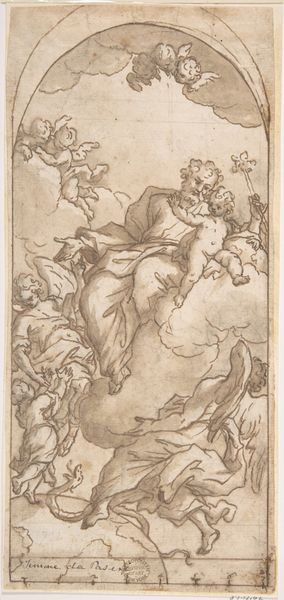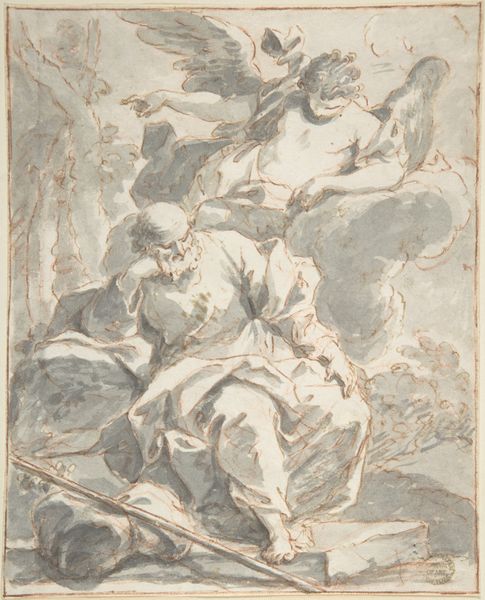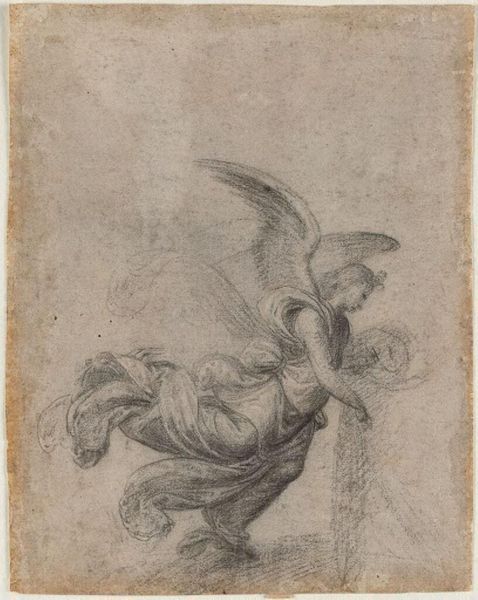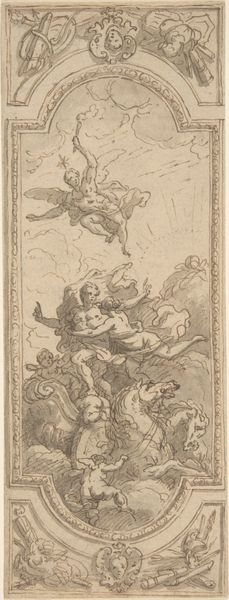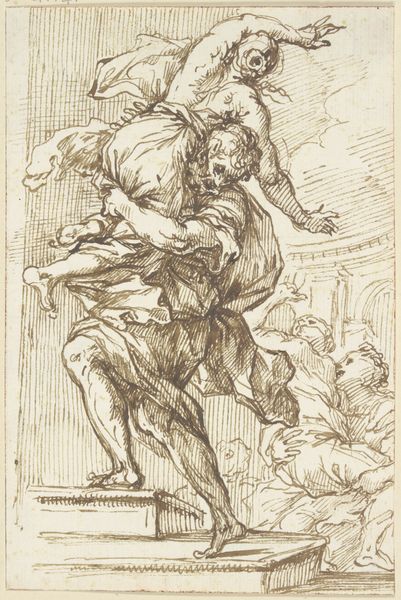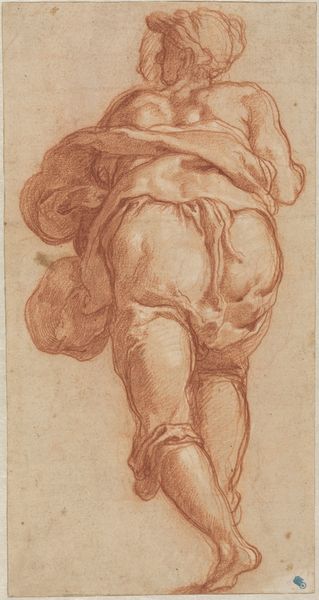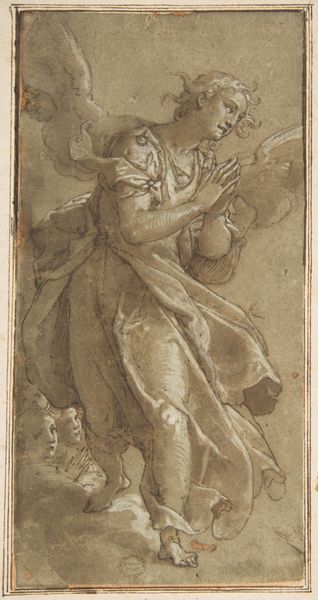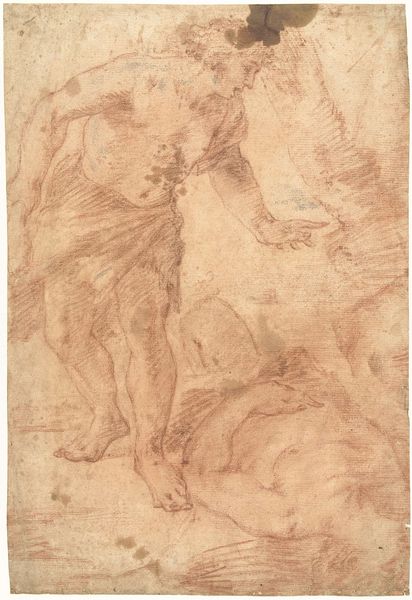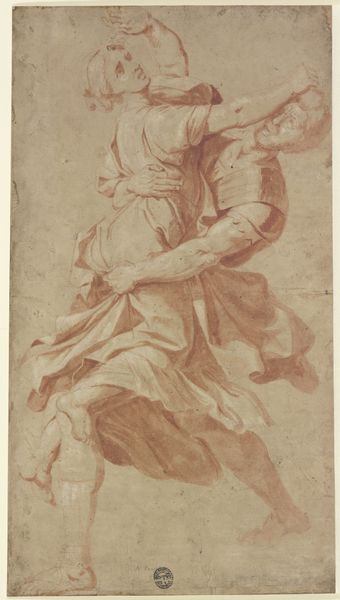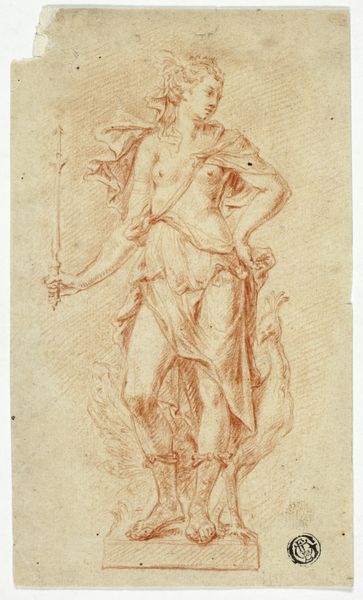
drawing, print, paper, pencil
#
pencil drawn
#
drawing
#
allegory
# print
#
pencil sketch
#
landscape
#
figuration
#
paper
#
pencil drawing
#
pencil
#
italian-renaissance
#
nude
Dimensions: height 199 mm, width 149 mm
Copyright: Rijks Museum: Open Domain
Curator: Immediately, the sepia tones and the swirling lines give me a sense of a dreamscape, slightly melancholic but powerful. Editor: That's interesting. Let me offer some background. This work is “Galatea on a Dolphin,” a pencil drawing by Jacopo de' Barbari dating from around 1490 to 1513. The paper itself becomes an artifact, telling a story. The fading suggests time's passage. Curator: And Galatea, of course, represents the idealized female form, an allegorical figure often associated with beauty and tranquility. But there’s an undeniable tension here. The dolphin almost seems strained. Editor: Yes, think about the labour inherent in printmaking. The Renaissance was obsessed with reproducing images; here we see the potential for the spread of artistic ideas through tangible materials, raising important questions about skill and distribution. The choice of pencil on paper allowed for detailed preliminary work that could be transferred to plates for mass production. Curator: Mass production and accessibility. This piece provides commentary on gender and mythology within a society that privileged male gaze. How does the means of reproducing this image contribute to the commodification of the female form? Is this glorification or something more critical? Editor: Well, by focusing on the dolphin as a symbol of maritime power and wealth, alongside the classical figure of Galatea, we begin to ask about trade routes, material exchange, and cultural appropriation. Consider where the pigments came from, the type of paper used... the social footprint is considerable. Curator: True. Placing it in context—Italian Renaissance, a period of patronage and power dynamics—we see how even seemingly benign images serve sociopolitical agendas. The dolphin and the nude goddess both gain new meaning when examined as part of the burgeoning Italian print market. Editor: Exactly. The making of this piece allows us to see that beyond its aesthetic qualities, materials tell stories about economy and labor. This goes beyond mere aesthetic consideration. Curator: Acknowledging these networks of exchange is how we deepen our analysis of Renaissance artworks and appreciate that beyond their beauty there is a wealth of context waiting to be uncovered. Editor: And by tracing the means by which "Galatea on a Dolphin" was produced and disseminated, we've begun to grasp the rich layers of history embedded within the pencil on paper.
Comments
No comments
Be the first to comment and join the conversation on the ultimate creative platform.
